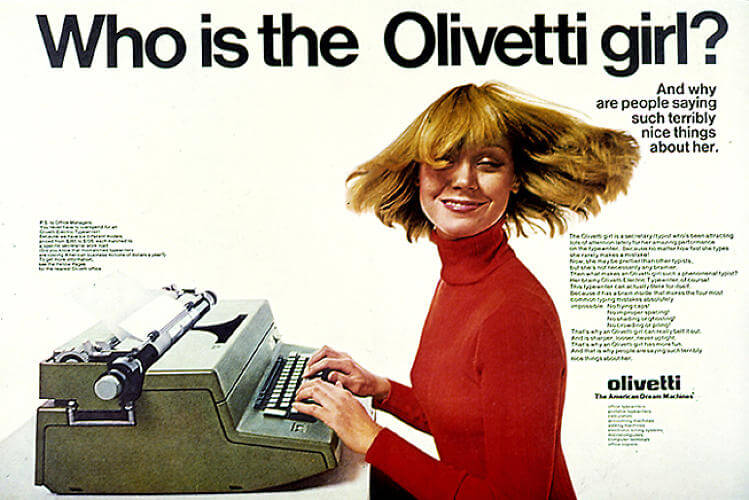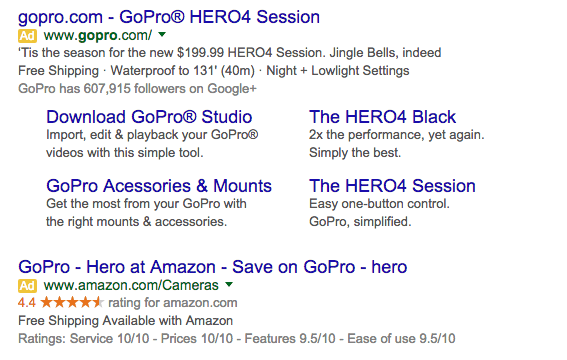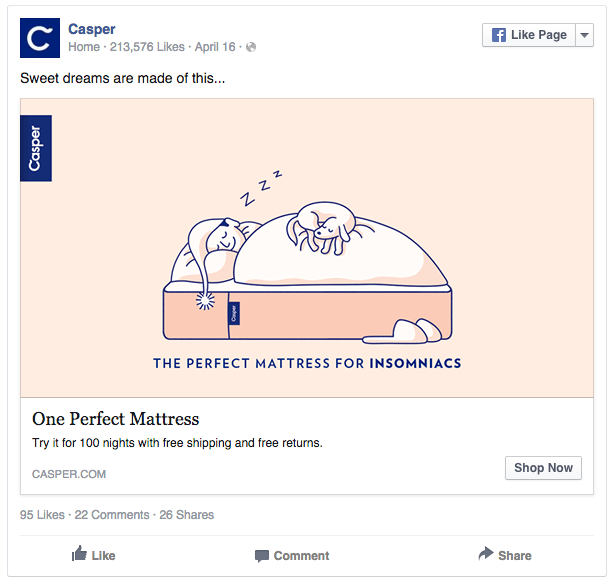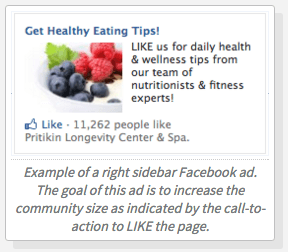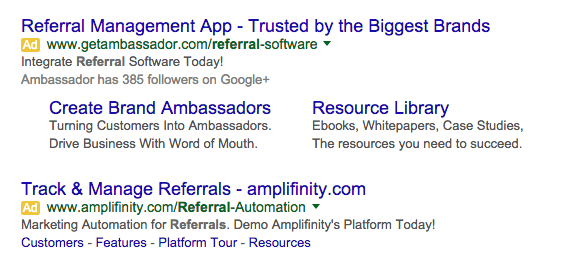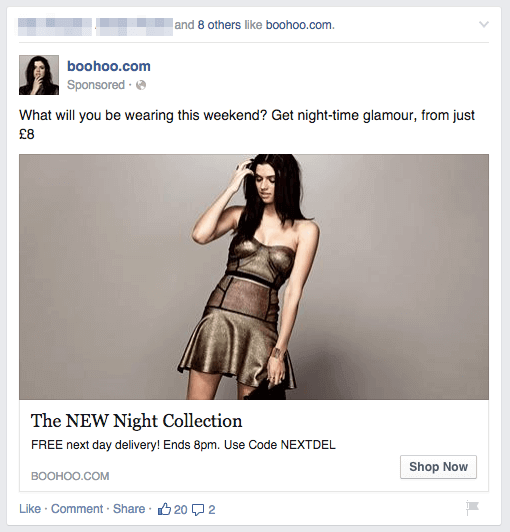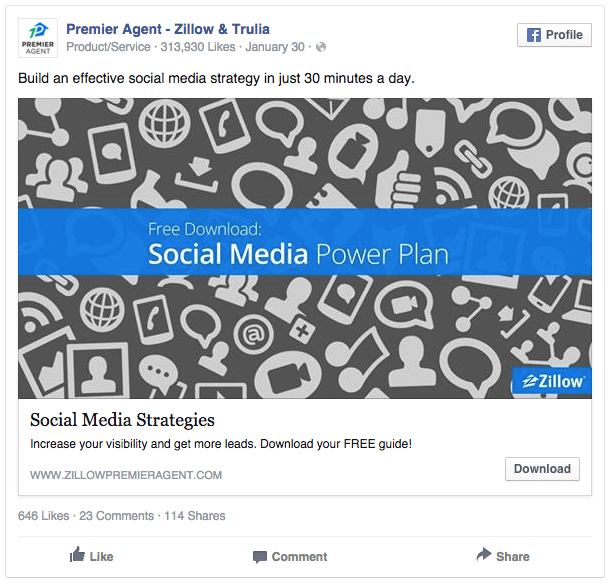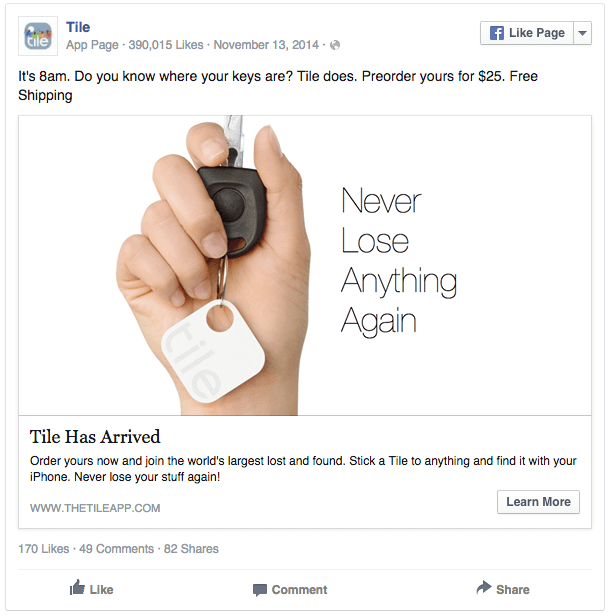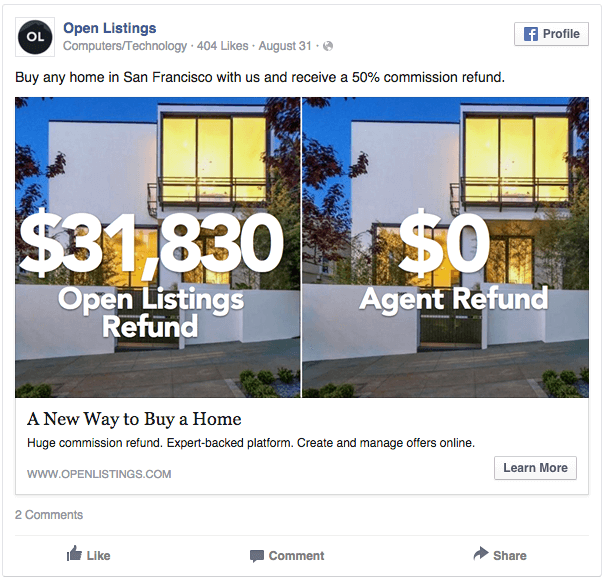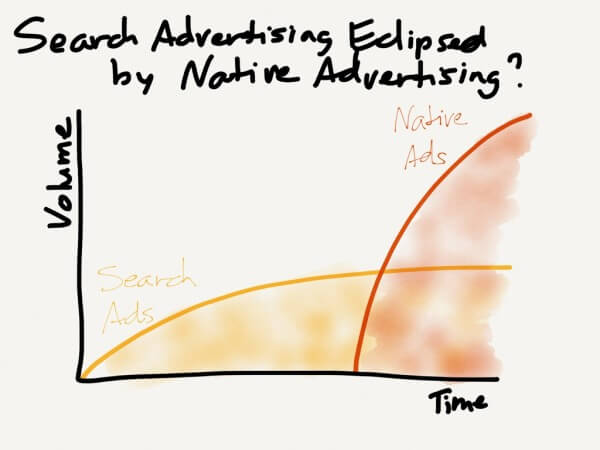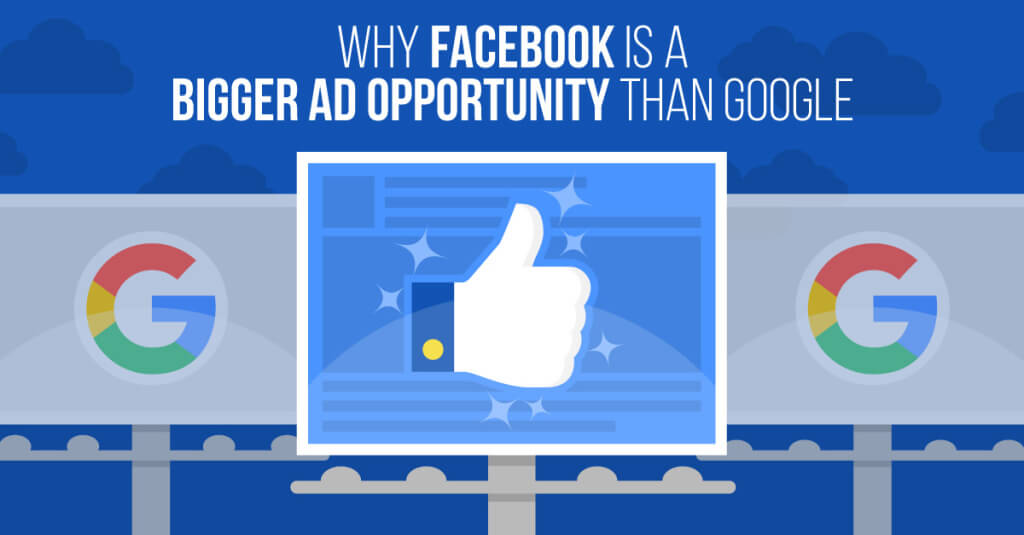
15 Dec Why Facebook Is A Bigger Ad Opportunity Than Google
[ad_1]
Google AdWords was one of the great coups of modern advertising. Over 90% of people in the U.S. and EU use Google to search for things. By choosing the right keywords to advertise against, companies could reach consumers who’d already demonstrated interest in their product and skip the process of demand generation.
Or so the story went. Now, not only are people spending more time using apps than searching on Google or watching TV, most of that time is being spent on Facebook.
And unlike with Google, people don’t go on Facebook to make decisions about what products to buy. They go on Facebook to engage with content and talk to their friends. They go on Facebook to play games and find out about parties.
They go on Facebook, in short, to avoid making those kinds of decisions. That may sound bad, but in reality, you don’t want to advertise to people who are making decisions or searching for information.
You want to advertise when they’re casually browsing. You want to advertise when they’re relaxing, when they’re dreaming, when they’re imagining and enjoying—in other words, everything they do when they’re floating on Facebook’s endless river of content. That is your secret weapon as a marketer.
Generation Over Demand
My first job I was in house at a fur company, with this old pro of a copywriter, a Greek, named Teddy. Teddy told me the most important idea in advertising is “new.” It creates an itch. You simply put your product in there as a kind of calamine lotion. — Don Draper, Mad Men
While Google has focused and excelled at dominating the market of online demand fulfillment—when people search for things they want and advertisers pay to have their products appear in front of them—this system relies on a model of the web that is becoming less relevant by the day. The new model will be one based on demand generation—where advertisers create awareness and interest in a company’s products. Why?
- People spend more time on mobile devices than PCs and yet half of Google’s users do zero searches per day on mobile.
- Native advertising—the kind that’s inline with the content you want and not off to the side like a banner ad—is more effective and cost-efficient than traditional advertising.
It’s often said that the 1960’s were the golden age of advertising. With only a few dominant television networks and magazine publishers, reaching consumers was easy but expensive. Advertisers practiced demand generation back then too—they made ads that creatively built up brand affinity by amusing and tickling people’s senses.
This is a “classic” ad because it’s not designed primarily to educate you on a product’s features. It’s obviously not like a Google ad designed to create frictionless conversion. It’s designed to get you interested, to make you wonder what Olivetti is all about—why are people saying such terribly nice things about her? She must be great!
Facebook is a destination just like TV or magazines. Its users are corralled into an immersive stream of engaging content, and advertising has incredible power there. No one, after all, goes to Google to relax or learn or be amused the way they do with Facebook. We are witnessing a huge moment. Advertisers are beginning to wake up to this fact and realize that brand advertising does have a place on the net.
Today, though, advertisers also have the power to target their ads and understand how well they’re performing. Some of the methods they’re using to get into the heads of users were first understood and tried in the 50’s and 60’s, while some are more novel. All—and we’ll look at 3 in this article—operate according to Facebook’s structure and the unique opportunity that Facebook presents to generate brand affinity and demand for a product.
1. Target Their Psychology
Advertisers of the past were basically limited to targeting by geographic location and broad ranges of age—guessing, essentially, who was really in front of the TV screen.
Google may be able to tailor ads by a user’s browser history, but what you search for on the web is just one part of you.
Facebook’s targeting system, on the other hand, is ridiculously powerful. Users give up an unprecedented amount of information and you can use almost all of it; ads can be targeted to an audience by country, state, city, zip code, age, gender, occupation, race, interests, how long they’ve been single or how long they’ve been engaged, the languages they speak, their level of education, whether they’re fans of you or not, whether they’re fans of ballroom dancing or not, whether they are fans of you and ballroom dancing or not—the list goes on.
Some people are still anxious, thinking this will still be too many people picked from Facebook’s billions. But not so. Put some effort into thinking like a psychologist and Facebook’s targeting system will let you pick the exact group of people that you want to reach.
Build The Right Profile
A 2012 study by researchers from the Rotman and Kellogg Schools of Management demonstrated that advertisements were more effective when they were tailored to specific psychological profiles rather than specific demographics.
Five cell phone advertisements were constructed, each one designed to target a major trait domain of the human personality: Extraversion, Agreeableness, Conscientiousness, Emotional Stability and Openness to Experience.
Each ad featured a photo of the phone along with a paragraph of text altered depending on the personality of the targeted consumer. Participants were then divided based on their personalities and shown corresponding ads.
In every single case, the ads were rated as most effective when they aligned with the personalities of the participants.
To understand how you might target your ads to emotional traits, take a look at this ad by GoPro from the AdEspresso Facebook Ad Gallery.
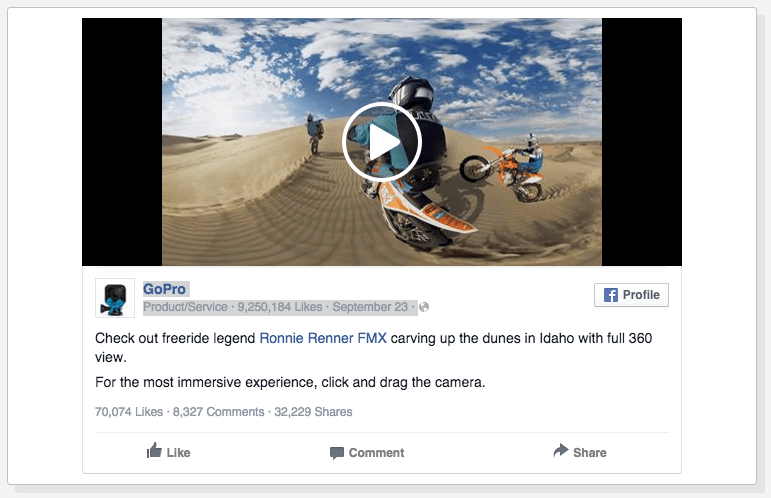 GoPro is aiming at and keying in hard on the extroverted and open-to-experience market by showing you how exciting GoPro footage of extreme sports can be. To reach those kinds of consumers, there are a number of strategies they could have used:
GoPro is aiming at and keying in hard on the extroverted and open-to-experience market by showing you how exciting GoPro footage of extreme sports can be. To reach those kinds of consumers, there are a number of strategies they could have used:
- Targeting consumers who’d gone or expressed interest in going to adventure destinations like Maui, the Virgin Islands or Lake Tahoe.
- Targeting the 20-35 year old male demographic.
- Targeting consumers who’d liked things like the X Games, BASE jumping or other extreme sport activities.
To do this yourself, construct a buyer persona for your product or service with an emphasis on the five traits listed above. If your general demographic is women aged 18-24, divide that group into five sections and ascribe each one interests and buying habits that match up to an emotional trait. A few of these will most likely wind up being far more plausible than the others—those are the ones to use in your ads.
Find Your Audience’s Aspirations
Of course, a lot of people who don’t do any extreme sports at all are buying GoPros. But that doesn’t mean the depictions of dirt biking and sky diving are irrelevant; a Journal of Advertising study from 1995 demonstrated that consumers often choose or avoid products based more on how much they desire the lifestyle idealized by it.
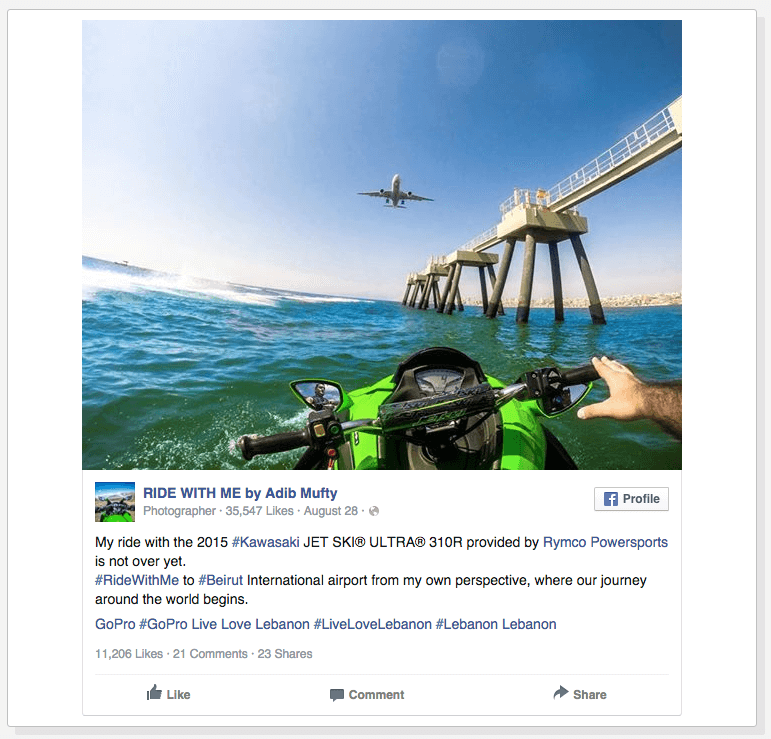 If the scene depicted above looks fun to you, then this ad has done its job. It’s seeded the idea in you that GoPros exist to capture scenes of really fun, out-there activities that you could take part in and record if you got one.
If the scene depicted above looks fun to you, then this ad has done its job. It’s seeded the idea in you that GoPros exist to capture scenes of really fun, out-there activities that you could take part in and record if you got one.
Compare those ads to GoPro’s Google Search Ads:
What’s more alluring?
When you’re coming up with your buyer persona, make sure you think about what kind of ideal you’re presenting. It doesn’t have to be something incredibly luxurious or cool, or even an “ideal” in the classic sense of the world. It just needs to present a better/more interesting/desirable vision of the world, as in this cute, cartoony ad from Casper:
2. Fill The Entire Funnel Using Network Effects
Google AdWords serves only one part of the traditional sales funnel: the bottom. Customers want something, they search for it, and maybe they happen to click on an ad for your product. But using just Google Ads, you can’t do much for the top of your funnel. You can’t generate demand with text-based ads that only appear for those who already demand something.
Facebook, on the other hand, gives advertisers a myriad of ways to drum up consumer awareness and interest. To get a foot in the door (or in your Newsfeed), advertisers can combine proven psychological tactics with the network effects that made Facebook so big in the first place.
Getting Customers With The Ben Franklin Effect
Have you ever wondered why companies are always asking you to “like” them on Facebook? It’s counterintuitive, but there’s actually good reason to believe that people who comply with that request are more likely to become customers later.
In 1965, Jonathan Freedman and Scott Fraser conducted a study at Stanford University designed to a test a hypothesis about compliance: that asking someone to do you a small favor would make them more likely to do a larger one for your later.
What they did was call up 156 Palo Alto housewives. Sometimes, the researchers asked the women to tell them about the households products they used. Sometimes they didn’t. Three days later, the researchers called again. They asked every participant if they would be okay with a team of men coming by to personally classify all the household products in their house—a 2 or 3 hour operation.
Those housewives who’d been asked the first questions were 20% more likely to accept this second request.
It’s actually a fairly old idea. Ben Franklin famously observed this phenomenon and wrote, “He that has once done you a kindness will be more ready to do you another than he whom you yourself have obliged.”
By narrowing down what you want from your customer and making it easy as pie for them to fulfill it, you can ask of them a “small favor.” Later on, they’ll remember that in a positive light and be more likely to buy a product or write a review. Don’t shy away from asking people to do things for you: psychologically, they’ll actually like you more if they do it.
Use Consensus To Build Credibility
When you’re marketing a new product, you need to amass likes and shares so that you get more of a foothold in the Facebook world. To start getting those likes, companies often use industry facts and figures or statistics about their existing customers to demonstrate a consensus on the quality of their value proposition, such as in this ad from Ambassador.
The statistic about personal recommendations being preferred by consumers plays into the product that Ambassador makes—a tool for tracking referrals. It’s not a direct appeal, but one based on reasoning: if most people trust their family and friends about products, then I must be better off with a tool that helps me track those kinds of referrals.
Ambassador’s Google ads might be useful for someone who already knows Ambassador, but they’re unlikely to attract anyone on their own, especially when it’s hard to see what makes it any different from other options like Amplifinity (also listed).
Once people start liking a product page, that fact gets embedded in all their Newsfeed ads, cranking the consensus aspect up to 11.
When a bunch of a user’s friends like a product or company page, they’re going to see that and associate them with that page.
And Facebook isn’t just going to pick out two random names to show: when a user sees that “x,” “y,” and “n” others liked a page, x and y are inevitably going to be friends with whom they possess the strongest social ties, strengthening the social proof aspect even further.
Use statistics and testimonials to build credibility for your product. People are busy and often cynical, and they want to see other people saying good things about your product or objective proof of your value proposition.
3. Create Mind-blowing Content
There are problems with native advertising, of course. Done wrong, it can embarrass your brand and make your readers feel betrayed. The Atlantic found this out after a poorly thought out collaboration with the Church of Scientology.
But that doesn’t change the fact that 70% of web consumers would rather learn about products through content then traditional advertising. That means that 70% of consumers are going to be disappointed if all you’re doing is trying to steal clicks in Google’s search results.
Facebook is not the only place on the net where you can advertise your product with content, but it is the most popular, and there are a couple of factors that make it ideal.
For one, ads are relatively rare on the Newsfeed. No clutter. They don’t annoy the user like pop-ups or banner ads used to, so the user experience is minimally impacted. And, because of the network effects discussed above, companies are heavily incentivized to produce better content, content that’s going to be shared or liked rather than just looked at.
Just remember: with great power comes great responsibility.
Be Generous
Consumers love getting things that will bring them value, especially if they’re free. Zillow put together an eBook on social media strategies and decided to give it away on Facebook.
There are a number of psychological reasons why it makes sense to give things away for free.
Behavioral economics researcher Dan Ariely has observed that people actually over-value free items. Participants in a study Ariely ran preferred free Hershey’s Kisses to 13 cent Lindt truffles, even though everyone knows the latter is much more delicious.
(Plus, a single Lindt truffle is worth something like 33 cents, while a single Hershey’s kiss is worth about 3!)
Not only are people more attracted to free things, they have a hard time, in general, evaluating the value that they expect to get from buying something. Zillow probably realized just how many of these social media guides were already out there and didn’t want people to be paralyzed thinking about whether this one was worth giving a bunch of money or information away for.
Show Them What They’ll Lose
The way that you frame your ad determines how people will respond to it. Tile, the maker of a small GPS-enabled clip that goes on your wallet or keys, does not frame their product in terms of what it will add to your life. They frame it in terms of what it will prevent you from losing.
In their seminal paper on the psychology of choice, Daniel Kahneman and Amos Tversky looked at several different examples of framing and how they impacted the way that people thought about the decisions they had to make.
In one test, they set up a fairly morbid hypothetical for their participants. An unusual disease had cropped up and was projected to kill 600 people, and they were responsible for deciding how the government should react. Participants were not told the details of the programs, just the outcomes.
In Program A, 400 people would die.
In Program B, there would be a 1/3 probability of no one dying, and a 2/3 probability of all 600 people dying.
78% of participants, when asked, preferred Program B, but in a similar test where the first program referred to directly “saving” people and the second program referred to probabilities of survival, participants preferred the first program: the sure bet.
When people stand a chance of gaining (or saving people), Kahneman concluded, they’re more likely to avoid risk. In other words, we’d rather get $10 straight up than gamble for $20. But when it comes to the threat of losing (or letting people die), people are more likely to take risks.
That’s part of Tile’s messaging strategy. By reminding you of the things you lose in your daily life, Tile wants to get you to take a risk on buying their product. “Its 8am. Do you know where your keys are?” is designed specifically to teleport you to a time of great anxiety, i.e. it’s time to go to work and you don’t have your keys. They’re betting that you’ll do just about anything—at least pay $25—to avoid that fate.
Similarly, in this ad from Open Listings, the decision you have to make is framed in terms of the money you will lose if you don’t use their service.
When advertising on Facebook, you need to remember that users can always keep scrolling. This isn’t a banner ad that stares them down—you need to make a point and make it fast. Telling someone they can gain a certain amount of money is one thing.
But if you can tap into the loss aversion principle and demonstrate what they’ll lose or miss out on, you’ll trigger that risk-taking impulse and they’ll stop scrolling. And risk, in the context of Facebook, means a click.
Facebook Avenue
It’s hugely important to get started with Facebook ads now, to start learning the techniques that will help you succeed, because this is the way the world is moving.
Madison Avenue’s advertisers have been slow to react to the web, and as a result their industry is going through big changes trying to adjust—just as Ad Age’s Bob Garfield predicted in his now-famous “Chaos Scenario” articles.
“Economics will have its due,” he wrote, “The law of diminishing returns will eventually prevail.” So far, he’s been proven right. Not only that, but the same transition appears to be happening again—from search ads to native ads.
Native advertising, especially on Facebook, is growing at an insane clip. Stratechery’s Ben Thompson has written about this phenomenon at length. His contention is that Google, while it is still very powerful and seemingly infallible, is going to fall behind. Search advertising was the foundation of Google’s business. They did very well at it. But native ads are just better. He drew a graph to explain what would happen.
You don’t want to live in the plateau of search advertising. If you want to successfully market your business, you need to go where the people are watching, where they’re chatting, where they’re engaging—you need to go native.
[ad_2]
Source link
Social Media Agency, Social Media, Digital Marketing, Digital Marketing Agency, Search Engine Marketing, SEO, digital marketing agency dubai, video content marketing, crossfit marketing dubai, video marketing dubai, digital marketing agency abu dhabi, facebook marketing dubai, facebook marketing abu dhabi, digital marketing agencies in dubai, social media agency, content marketing dubai, content strategy dubai, branding dubai


